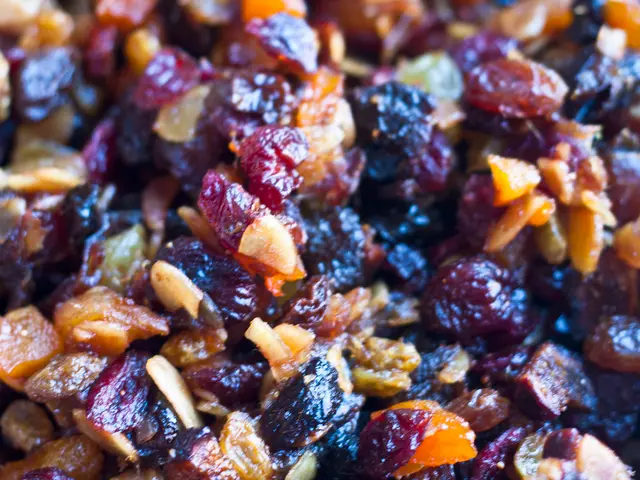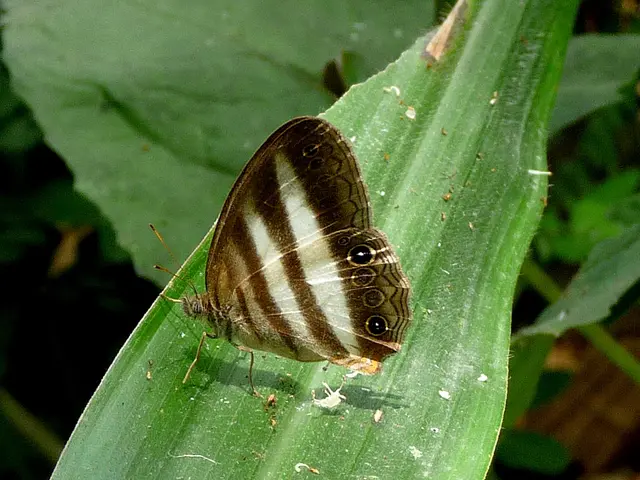Preparation for Planting: Examining Soil Temperature Prior to Sowing
In the world of gardening, understanding how to adjust soil temperature is crucial for successful plant growth. Here are some key strategies to help you achieve this.
Tillage Management
Reduced tillage, such as strip-till, warms the soil earlier in the season and conserves moisture, making it ideal for areas with late springs and hot dry summers. On the other hand, no-till farming delays soil warming but conserves moisture, which can be beneficial in hot, dry climates. Managing crop residue is essential, as residue left too long can insulate and cool the soil, delaying warming in spring [1].
Mulching
Applying organic mulch, such as straw, grass clippings, or wood chips, can cool the soil in hot weather and reduce temperature fluctuations. Deep mulch layers create a buffer against extreme heat, especially in midsummer. However, it's important to keep mulch a few inches from plant stems to prevent rot and pest problems [3][5].
Shade Structures
Shade from plants, temporary covers, or shade cloth reduces direct solar heating, lowering soil temperature and stabilizing it. This results in less stress and healthier roots during hot periods [5].
Soil Solarization
Using clear plastic to briefly raise soil temperature before planting can help warm cold soil and reduce pests, creating a better growing environment, particularly for warm-season crops like tomatoes [2].
Monitoring Soil Temperature
Using soil thermometers to measure temperature at seed depth helps determine the best planting time. For example, waiting until soil temperatures are consistently above 60°F encourages healthy root development and nutrient uptake in tomatoes. Potatoes have varying optimal temperatures depending on growth stages and benefit from soil warming via black plastic mulch or sunny placement [2][3].
Temperature Requirements for Different Plants
Warm-season crops, such as peppers and tomatoes, require much higher soil temperatures for germination to occur, for example, tomatoes prefer the soil to be about 75°F (24°C). To find out the ideal temperature for your plants, refer to the seed packet, consult a local agricultural research center, or check online sources such as agricultural agencies and extension services.
Soil temperature is not the only factor affecting seed germination. Other factors such as sunlight, moisture levels, and soil type also play a role. Loams, mixtures of soil types, are the best soils for temperature and moisture.
The ideal soil temperature for various plants varies. For instance, tomatoes, cucumbers, and snap peas require at least 60°F (16°C), while sweet corn, lima beans, and some greens need a minimum of 65°F (18°C). Cool-season crops like lettuce and peas germinate at temperatures just above freezing.
Additional Tips
Organic mulch can help cool the soil and stabilize its temperature, while watering in the morning helps avoid rapid temperature changes. It's also important to note that the ideal temperature for germination may not be the same as the ideal temperature for subsequent plant growth.
By implementing these strategies, you can effectively manage soil temperature for optimal plant growth, ensuring a bountiful harvest in your garden.
[1] University of California Agriculture and Natural Resources. (2019). Tillage and Soil Management. [Online] Available at: https://ucanr.edu/sites/soils/files/285778.pdf [2] University of Missouri Extension. (2020). Soil Solarization. [Online] Available at: https://extension.missouri.edu/publications/G6431 [3] University of Illinois Extension. (2020). Mulching Vegetable Gardens. [Online] Available at: https://web.extension.illinois.edu/cfivt/vegetables/mulching.cfm [5] University of Florida IFAS Extension. (2020). Soil Temperature and Plant Growth. [Online] Available at: https://edis.ifas.ufl.edu/pdffiles/UV/UV07900.pdf








